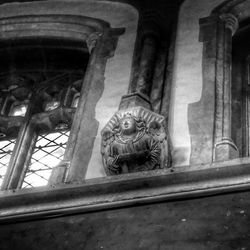You can follow the.lostplaces abandoned adventures
on Instagram @the.lostplaces and Twitter @peakdistrictand
Where the curiosity never ends…
St Peter & St Paul, East Harling
Whilst the earliest parts of the church date from the 13th century, it was in the 15th that the building was truly transformed into what it is today. The work was funded with a donation made by Sir Robert Harling (whose tomb can be found in the Lady Chapel) and continued by his daughter, Anne, and her subsequent husbands.
.jpeg)
The south aisle of the church is divided by a beautiful parclose screen which separates the Lady Chapel from the nave. The tracery of the screen is painted in vivid red, gold and green with gold stars on a background of rich blue. Housed within the chapel, is not only the tomb of the aforementioned Sir Robert Harling but also that of Sir Thomas and Lady Lovell.
Sir Thomas Lovell was the Chancellor of the Exchequer in the late 15th century and was also the esquire of the body to Henry VII. In the early 16th century, the Lovells took over the local manor from the Harling family. The Lovell’s tomb is an ornate affair,
carved from marble it features a rather curious pair or arms holding aloft a scalp at the feet of Lady Lovell.
In the 1870s the church underwent a major restoration and the box pews were replaced with those we see today. The pews of the chancel contain some particularly enchanting characters including a lion and a unicorn, the latter a nod to the heritage of the Harling family. In fact, there are many unicorns dotted around the church as well as the odd squirrel which was a symbol of the Lovell family.
In the chancel, the east window has five lights featuring rosary sequences and is accredited to the Norwich School of Glassmakers. It also has a fascinating history in that it was removed and reinstated, not once, but twice.
The window was donated by Sir Robert Wingfield, second husband of Anne Harling, and was first removed and hidden in nearby East Harling Hall to protect it from the consequences of Cromwell. It was returned to the church in 1736 and then taken out again in 1939 with the advent of the second world war, before finally being reinstated in 1947.
At the west end of the church, you will find the bottom part of the rood screen which has been relocated from the chancel. One can only imagine how splendid the original screen must have been as the surviving panels feature some very intricate carvings.
.jpeg)
 |  |  |
|---|---|---|
 |  |  |
 |  |  |
 |  |  |
 |  |  |
 |  |  |
 |  |  |
 |  |  |
 |  |  |
 |  |  |
 |  |  |
 |  |  |
 |  |  |
 |  |
